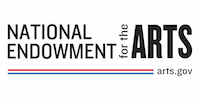
Join us for a musical and meditative celebration of Himalayan and Hindustani cultures, featuring performances by Bhoomika Jain, a Hindustani classical singer; Pallavi Raisurana, a Hindustani classical dancer; and a transformative mindfulness meditation led by Lama Aria Drolma.
In honor of National Immigrant Heritage Month, celebrate community spirit and the themes of love, pride, and unity.
Light refreshments will be served. Each ticket holder will receive a Ganesh magnet souvenir.
This program is hosted by Tashi Chodron, Himalayan programs and communities ambassador at the Rubin.
About the Presenters
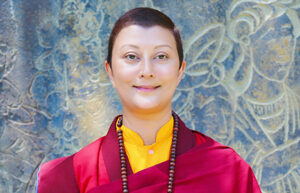
Lama Aria Drolma is an ordained Buddhist teacher in the Karma Kagyu tradition of Tibetan Buddhism and has completed over a decade of monastic study and meditation training. She is a graduate of the traditional Tibetan Buddhist retreat program spanning three years and three months, an advanced cloistered meditation training program affiliated with Palpung Sherabling monasteries.
Lama Aria Drolma teaches worldwide, leading retreats, workshops, and corporate meditation programs, and is a popular guest speaker at universities and organizations. She emphasizes Vajrayana Buddhism and Buddhist principles, making them relevant in our everyday lives, helping us to cultivate loving kindness and compassion, and bringing about a transformation of contentment and a genuine sense of well-being.
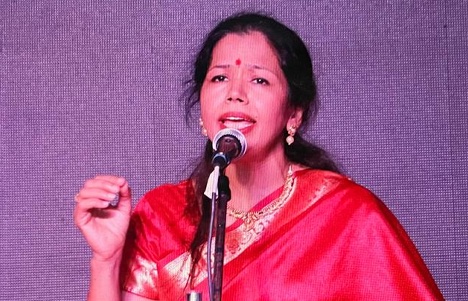
Bhoomika Jain is an accomplished artist who began her musical journey by singing for the All India Radio Yuvavani during her college years. Following the esteemed Guru Shishya Parampara, Bhoomika had the privilege of learning from renowned and talented masters of the Kirana and Mevati gharanas. Her dedication to her craft and her rich training background have made her a respected figure in the world of music.
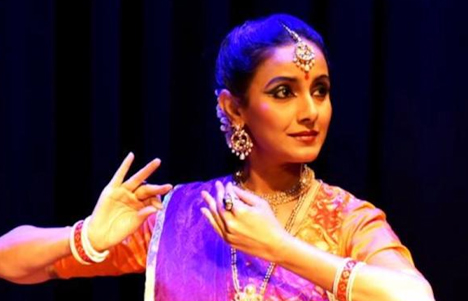
Pallavi Raisurana, founder of Anhad Nrityashala, and a disciple of Padmabhushan Smt. Kumudini Lakhia and Smt. Shama Bhate, advocates for the appreciation and integration of Indian classical arts in everyday life. With Kathak as her choice of expression, she seeks to revive the essence of traditional knowledge systems, dance, and music that are frequently overlooked by contemporary society. She achieves this through two means: performance and education. Pallavi has presented her work at home and abroad, including at the Indian Museum, Kolkata; the Metropolitan Museum of Art; Tribeca Performing Arts Center; and Mumbai Dance Season.
Major support for Himalayan Heritage is provided by The Frederick P. Lenz Foundation for American Buddhism.
Special support is provided by Heather B. Henson.
The Rubin Museum’s programs are made possible by the New York State Council on the Arts with support of the Office of Governor Kathy Hochul and the New York State Legislature, as well as by generous donations from the Museum’s Board of Trustees, individual donors, and members.

Image credit
Ganesha; Madhya Pradesh, India; 11th century; sandstone; Rubin Museum of Art; C2004.14.4 (HAR 65346)
Join us in the theater for a screening of City of Dreams: From Mountains to Oceans, a compelling docudrama centered around the remarkable journey of Bhutanese filmmaker Karma Deki in the film industry. Directed by Karma Deki herself, the film seamlessly blends real-life experiences with compelling storytelling, offering insight into the triumphs and obstacles faced by women in cinema. The screening will be followed by a conversation with director Karma Deki.
About the Film
In the dual role of director and protagonist, Karma Deki guides viewers through a captivating tale of self-discovery, resilience, and ambition. From exhilarating highs to challenging lows, we follow Karma’s unwavering pursuit of success in the ever-evolving world of filmmaking. In the realm of cinema, every heartfelt laugh and tearful moment owes its existence to the dedication of a director.
For true cinephiles, the magic lies not only in the actors on screen but also in the visionary behind the camera. Behind each emotionally evocative film lies the journey of a filmmaker, striving to manifest their creative vision into reality. Among these storytellers stands a female filmmaker from the breathtaking landscapes of Bhutan, nestled in the majestic Himalayas. As her narrative unfolds, we witness the resilience and passion that drive her through the challenges of her craft, showcasing her unique journey in the world of cinema.
This film is written and directed by Karma Deki (Bhutan Infotainment) and produced by Namgay Tshering (Kushuthara Entertainment).
About the Speaker
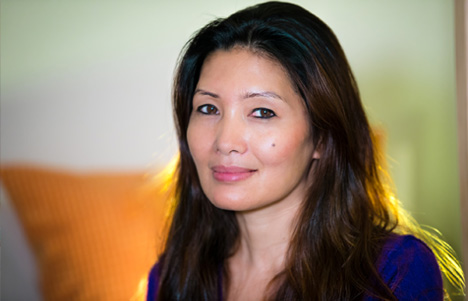
Karma Deki is a passionate and visionary filmmaker committed to illuminating the narratives of marginalized communities and amplifying their voices. As the CEO of Bhutan Reel Stories and president at Women in Film and Television, Bhutan, Karma has cultivated a community of film enthusiasts and is a fierce advocate for inclusivity in the industry. Driven by compassion, mindfulness, and community values, Karma believes in the transformative power of storytelling to raise awareness on social issues and inspire positive change. Learn more at karmadeki.com.
This program is hosted by Tashi Chodron, Himalayan programs and communities ambassador at the Rubin.
The Rubin Museum’s programs are made possible by the New York State Council on the Arts with support of the Office of Governor Kathy Hochul and the New York State Legislature, as well as by generous donations from the Museum’s Board of Trustees, individual donors, and members.

Join us in celebrating Vesak and Saga Dawa in collaboration with the Buddhist Council of New York. Vesak and Saga Dawa celebrate Buddha Shakyamuni’s birth, enlightenment, and mahaparinirvana, or passing away. Saga Dawa is the holiest month in the Tibetan Buddhist calendar. The merit of any good deeds performed during this month are said to be multiplied many times over—by as many as a hundred million times.
Each one of us holds the potential to enact change through the teachings of the Buddha. In these critical times, when the world yearns for peace and unity, our gathering is more than a celebration of the Buddha; it’s a call to embody the Buddha’s wisdom through acts of harmony, empathy, and compassion within our community and the wider world.
Hosted by Tashi Chodron, Himalayan programs and communities ambassador at the Rubin, this afternoon of reflection will feature Buddhist teachers from a variety of dharma centers leading chants, prayers, rituals, and dharma talks.
Program Highlights:
- Bathing of the Buddha: A ritual symbolizing purification and renewal, inviting participants to cleanse their minds and spirits.
- Offering Chants and Prayers: A harmonious blend of voices from the Theravada, Mahayana, and Vajrayana traditions, fostering a sense of communal sanctity and peace.
- Short Dharma Talks: Insights from diverse traditions, offering perspectives on how to weave the Buddha’s teachings into the fabric of our daily lives for the betterment of all beings.
The Rubin is becoming a global museum and closing the building on 17th Street on October 6, 2024. As we gather, let us honor this space by filling it with the spirit of unity and the resolve to make a difference.
About Buddhist Council of New York
The Buddhist Council of New York, founded in 1985, is an association of Buddhist Temples and organizations whose mission is to foster dialogue, cooperation and unity within the Buddhist community in the New York City area, as well as to organize events each year such as Meditate NYC; Vesak, commemorating the birth, enlightenment, and death of Shakyamuni Buddha, and the Buddhist Forum.
Major support for Himalayan Heritage is provided by The Frederick P. Lenz Foundation for American Buddhism. Special Support is provided by Heather B. Henson.
The Rubin Museum’s programs are made possible by the New York State Council on the Arts with the support of the Office of Governor Kathy Hochul and the New York State Legislature.

Image Credit
Buddha Shakyamuni and Scenes from His Life; Tsang Province, Central Tibet; second half of the 14th century; pigments on cloth; Rubin Museum of Art; C2011.3 (HAR 77032)
Join us for a unique opportunity to contribute to the Rubin’s next exhibition Reimagine: Himalayan Art Now, opening March 15. For her installation Field of Wishes, participating artist Sonam Dolma Brauen will encircle a stupa from the Museum’s collection with 240 tsatsas. Participants will make their own tsatsas and place a paper inside with wishes for inner and world peace. Each participant’s tsatsa will be featured in the Field of Wishes installation.
In the Tibetan Buddhist tradition, tsatsas are votive offerings utilized to commemorate the dead. The ashes of a deceased person are often mixed with clay and used to make figurines with tsatsa molds. These figurines are placed in sacred places to accrue positive merit for the deceased person as well as those who placed them there.
This installation holds great personal significance for the artist, as the figurines are modeled after the tsatsa mold that her family brought with them during their escape from Tibet. By inviting community participation in the creation of her work, Sonam Dolma Brauen intends to convey peace, togetherness, and connection to one another.
By attending this program, you agree to be photographed, videotaped, and/or audio recorded for promotional and educational purposes.
Artist Statement
“As someone who has experienced displacement and the loss of my homeland,” I have a deep understanding of the challenges and complexities that come with being uprooted from one’s cultural and geographical context. Through my installations and artworks, I explore themes of identity, belonging, and the search for a sense of home. By incorporating elements of my lived traditions, such as tsatsas . . . into my art, I aim to create new narratives that challenge the past and redefine my own identity. It allows me to share my own journey and perspectives while also inviting others to contemplate their own sense of self and place in an ever-changing world.”
About the Artist

Born in 1953, Sonam Dolma Brauen spent the first six years of her life living high up in the Tibetan Alps. Due to the occupation of Tibet, she fled across the Himalayan mountains with her family to India.
At 19, she and her mother emigrated to Switzerland, where she married Swiss anthropologist and curator Martin Brauen. They have two children, Yangzom (movie director) and Tashi (artist).
Sonam Dolma Brauen, who paints mainly abstract pictures, began her art training in 1990, studying at Art School Bern. After moving to New York City in 2008, where she lived for four years, she began creating installations using materials such as monk robes from Tibet (My Father’s Death; currently on view at the Nelson-Atkins Museum of Art in Kansas City, MO) and plaster tsatsas.
Globalization and displacement have had a significant impact on the artist’s perception of herself. The artist’s provocative works utilize human hairs, teeth and used ammunition shells to comment on contemporary society. Her works have been exhibited in Switzerland, Germany, Korea, Holland, USA, and Italy.
Reimagine: Himalayan Art Now is supported by Bob and Lois Baylis, Noah P. Dorsky, Jacques and Natasha Gelman Foundation, Dan Gimbel of NEPC, LLC, Agnes Gund, New York Life, Matt and Ann Nimetz, The Prospect Hill Foundation, Eileen Caulfield Schwab, and Taipei Cultural Center in New York.
This program is supported, in part, by public funds from the New York City Department of Cultural Affairs, in partnership with the City Council.
The Rubin Museum’s programs are made possible by the New York State Council on the Arts with the support of the Office of Governor Kathy Hochul and the New York State Legislature.
This project is supported in part by the National Endowment for the Arts.


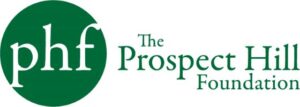
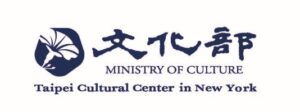



Image: Sonam Dolma Brauen; Field of Wishes; 2023; Clay; Courtesy of the artist
Join us for a unique opportunity to contribute to the Rubin’s next exhibition Reimagine: Himalayan Art Now, opening March 15. For her installation Field of Wishes, participating artist Sonam Dolma Brauen will encircle a stupa from the Museum’s collection with 240 tsatsas. Participants will make their own tsatsas and place a paper inside with wishes for inner and world peace. Each participant’s tsatsa will be featured in the Field of Wishes installation.
In the Tibetan Buddhist tradition, tsatsas are votive offerings utilized to commemorate the dead. The ashes of a deceased person are often mixed with clay and used to make figurines with tsatsa molds. These figurines are placed in sacred places to accrue positive merit for the deceased person as well as those who placed them there.
This installation holds great personal significance for the artist, as the figurines are modeled after the tsatsa mold that her family brought with them during their escape from Tibet. By inviting community participation in the creation of her work, Sonam Dolma Brauen intends to convey peace, togetherness, and connection to one another.
By attending this program, you agree to be photographed, videotaped, and/or audio recorded for promotional and educational purposes.
Artist Statement
“As someone who has experienced displacement and the loss of my homeland,” I have a deep understanding of the challenges and complexities that come with being uprooted from one’s cultural and geographical context. Through my installations and artworks, I explore themes of identity, belonging, and the search for a sense of home. By incorporating elements of my lived traditions, such as tsatsas . . . into my art, I aim to create new narratives that challenge the past and redefine my own identity. It allows me to share my own journey and perspectives while also inviting others to contemplate their own sense of self and place in an ever-changing world.”
About the Artist

Born in 1953, Sonam Dolma Brauen spent the first six years of her life living high up in the Tibetan Alps. Due to the occupation of Tibet, she fled across the Himalayan mountains with her family to India.
At 19, she and her mother emigrated to Switzerland, where she married Swiss anthropologist and curator Martin Brauen. They have two children, Yangzom (movie director) and Tashi (artist).
Sonam Dolma Brauen, who paints mainly abstract pictures, began her art training in 1990, studying at Art School Bern. After moving to New York City in 2008, where she lived for four years, she began creating installations using materials such as monk robes from Tibet (My Father’s Death; currently on view at the Nelson-Atkins Museum of Art in Kansas City, MO) and plaster tsatsas.
Globalization and displacement have had a significant impact on the artist’s perception of herself. The artist’s provocative works utilize human hairs, teeth and used ammunition shells to comment on contemporary society. Her works have been exhibited in Switzerland, Germany, Korea, Holland, USA, and Italy.
Reimagine: Himalayan Art Now is supported by Bob and Lois Baylis, Noah P. Dorsky, Jacques and Natasha Gelman Foundation, Dan Gimbel of NEPC, LLC, Agnes Gund, New York Life, Matt and Ann Nimetz, The Prospect Hill Foundation, Eileen Caulfield Schwab, and Taipei Cultural Center in New York.
This program is supported, in part, by public funds from the New York City Department of Cultural Affairs, in partnership with the City Council.
The Rubin Museum’s programs are made possible by the New York State Council on the Arts with the support of the Office of Governor Kathy Hochul and the New York State Legislature.
This project is supported in part by the National Endowment for the Arts.







Image: Sonam Dolma Brauen; Field of Wishes; 2023; Clay; Courtesy of the artist
Join us for a unique opportunity to contribute to the Rubin’s next exhibition Reimagine: Himalayan Art Now, opening March 15. For her installation Field of Wishes, participating artist Sonam Dolma Brauen will encircle a stupa from the Museum’s collection with 240 tsatsas. Participants will make their own tsatsas and place a paper inside with wishes for inner and world peace. Each participant’s tsatsa will be featured in the Field of Wishes installation.
In the Tibetan Buddhist tradition, tsatsas are votive offerings utilized to commemorate the dead. The ashes of a deceased person are often mixed with clay and used to make figurines with tsatsa molds. These figurines are placed in sacred places to accrue positive merit for the deceased person as well as those who placed them there.
This installation holds great personal significance for the artist, as the figurines are modeled after the tsatsa mold that her family brought with them during their escape from Tibet. By inviting community participation in the creation of her work, Sonam Dolma Brauen intends to convey peace, togetherness, and connection to one another.
By attending this program, you agree to be photographed, videotaped, and/or audio recorded for promotional and educational purposes.
Artist Statement
“As someone who has experienced displacement and the loss of my homeland,” I have a deep understanding of the challenges and complexities that come with being uprooted from one’s cultural and geographical context. Through my installations and artworks, I explore themes of identity, belonging, and the search for a sense of home. By incorporating elements of my lived traditions, such as tsatsas . . . into my art, I aim to create new narratives that challenge the past and redefine my own identity. It allows me to share my own journey and perspectives while also inviting others to contemplate their own sense of self and place in an ever-changing world.”
About the Artist

Born in 1953, Sonam Dolma Brauen spent the first six years of her life living high up in the Tibetan Alps. Due to the occupation of Tibet, she fled across the Himalayan mountains with her family to India.
At 19, she and her mother emigrated to Switzerland, where she married Swiss anthropologist and curator Martin Brauen. They have two children, Yangzom (movie director) and Tashi (artist).
Sonam Dolma Brauen, who paints mainly abstract pictures, began her art training in 1990, studying at Art School Bern. After moving to New York City in 2008, where she lived for four years, she began creating installations using materials such as monk robes from Tibet (My Father’s Death; currently on view at the Nelson-Atkins Museum of Art in Kansas City, MO) and plaster tsatsas.
Globalization and displacement have had a significant impact on the artist’s perception of herself. The artist’s provocative works utilize human hairs, teeth and used ammunition shells to comment on contemporary society. Her works have been exhibited in Switzerland, Germany, Korea, Holland, USA, and Italy.
Reimagine: Himalayan Art Now is supported by Bob and Lois Baylis, Noah P. Dorsky, Jacques and Natasha Gelman Foundation, Dan Gimbel of NEPC, LLC, Agnes Gund, New York Life, Matt and Ann Nimetz, The Prospect Hill Foundation, Eileen Caulfield Schwab, and Taipei Cultural Center in New York.
This program is supported, in part, by public funds from the New York City Department of Cultural Affairs, in partnership with the City Council.
The Rubin Museum’s programs are made possible by the New York State Council on the Arts with the support of the Office of Governor Kathy Hochul and the New York State Legislature.
This project is supported in part by the National Endowment for the Arts.







Image: Sonam Dolma Brauen; Field of Wishes; 2023; Clay; Courtesy of the artist
Many associate the bardo as the state in-between life and death. However, the bardo also refers to any liminal state, including the midpoint of dreaming and waking. Bardos are junctures at which the possibility for awakening, or liberation, is amplified. How can we navigate bardo periods of transition and come to terms with change?
Scholar and poet Dominique Townsend will lead a conversation with two vital contributors to the Tibetan literary landscape, Ann Tashi Slater and Tenzin Dickie. Slater will describe her great-grandfather’s instrumental role in bringing the Tibetan Book of the Dead to the West, and Dickie will reflect on the act of writing as an illustration of the bardo. A book signing with Slater and Dickie of Tenzin Dickie’s newly released Penguin Book of Modern Tibetan Essays will follow the program.
Join us at 6:15 PM for a docent-led pre-program exhibition tour of Death Is Not the End.
This program is hosted by Tashi Chödrön, Rubin Museum Himalayan Programs and Communities Ambassador.
About the Book
The Penguin Book of Modern Tibetan Essays is a groundbreaking anthology of modern Tibetan non-fiction. This unprecedented collection celebrates the art of the modern Tibetan essay and comprises some of the best Tibetan writers working today in Tibetan, English, and Chinese.
About the Speakers
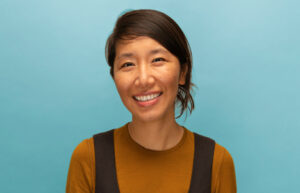
Tenzin Dickie is a writer and translator. A former Fulbright fellow, she works at the Buddhist Digital Resource Center in Boston. She is the editor of Old Demons, New Deities: 21 Short Stories from Tibet, published in 2017 by OR Books. Her writings and translations have appeared in Tibetan Review, Indian Literature, Cultural Anthropology, The Washington Post online, Words Without Borders, and Modern Poetry in Translation. She has an MFA from Columbia University and a BA from Harvard University.
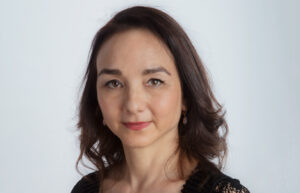
Ann Tashi Slater has written for The New Yorker, The Paris Review, The New York Times, Catapult, Guernica, Tin House, Granta, AGNI, and many others. She is a contributing editor at Tricycle, where she hosts an interview series, Between-States: Conversations About Bardo and Life. Her Tibetan great-grandfather helped bring the Bardo Thödol (The Tibetan Book of the Dead) to the West, where it ignited an enduring fascination with the bardo teachings as a guide to a meaningful life. Traveling in Bardo, Ann’s book about the art of living in an impermanent world, will be published by Hachette Go in fall 2025. Visit her at www.anntashislater.com. Ann teaches workshops throughout the United States, Asia, and Europe. She studied Comparative Literature at Princeton and Creative Writing at the University of Michigan.
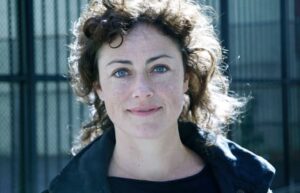
Dominique Townsend is Associate Professor of Buddhist Studies at Bard College in Annandale-on-Hudson, New York. Her research interests include Tibetan Buddhist history, aesthetics, cultural production, poetics, translation theory, and the interpretation of dreams. Columbia University Press released her first scholarly monograph, A Buddhist Sensibility: Aesthetic Education at Tibet’s Mindröling Monastery, in March 2021. She is also the author of a book about Buddhism for children and families called Shantideva (Wisdom Publications, 2015) and a book of poems called The Weather & Our Tempers (Brooklyn Arts Press, 2013). Dominique previously served as Assistant Director of Interpretation at the Rubin Museum of Art. She holds a BA in Religion from Barnard College, a MTS from Harvard Divinity School, and a PhD from Columbia University.
Major support for Himalayan Heritage is provided by The Frederick P. Lenz Foundation for American Buddhism.
Death Is Not the End is supported by the E. Rhodes and Leona B. Carpenter Foundation, Ellen Bayard Weedon Foundation, Robert Lehman Foundation, and The Prospect Hill Foundation.
The Rubin Museum’s programs are made possible by the New York State Council on the Arts with the support of the Office of Governor Kathy Hochul and the New York State Legislature.
Death Is Not the End is supported in part by the National Endowment for the Arts.
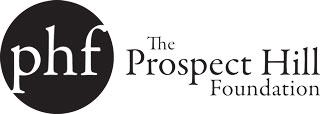


Image Credit
Peaceful and Wrathful Deities of the Bardo; Tibet; 18th-19th century; pigments on cloth; Rubin Museum of Art; purchased from the Collection of Navin Kumar; C2005.35.3 (HAR 65860)
To celebrate the closing weekend of Death Is Not the End, join us for an experiential program that delves deeper into the Tibetan Buddhist concept of the bardo, an intermediate state between death and rebirth.
Led by Khenpo Tenzin Norgay Rinpoche, Lama Pasang Gurung, and Lama Ugen Rongdrol Palden, and hosted by Tashi Chödrön, Rubin Museum Himalayan Programs and Communities Ambassador, the program will include a guided meditation with ritual instrumental music and recitation of passages from the Bardo Thödrol (Tibetan Book of the Dead). Participants will also learn about the chod practice of symbolically offering oneself to all beings, which is the ultimate expression of bodhicitta, or the path that leads to liberation. A Q&A will follow the program.
The program will be conducted while sitting and lying down on yoga mats. Mats will be provided, but you are welcome to bring your own.
Join us for a curator-led exhibition tour of Death Is Not the End with Senior Curator, Himalayan Art, Elena Pakhoutova at 6:15 PM. The tour will meet at the base of the spiral staircase.
About the Speakers
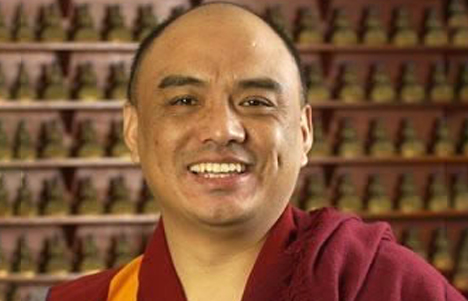
Khenpo Tenzin Norgay Rinpoche was born in Bhutan in 1965. After completing secondary school in 1986, he joined Ngagyur Nyingma Institute, the prestigious Buddhist studies and research center, at Namdroling Monastery in Mysore. At the Institute he studied under Khenchen Pema Sherab, Khenpo Namdrol Tsering, Khenchen Tsewang Gyatso, and other visiting professors, including Khenchen Jigme Phuntsok and Khenpo Pema Tsewang from Tibet. He completed the Shedra program in 1995 and joined the Institute staff, teaching there for three years. He was formally enthroned as Khenpo by His Holiness Penor Rinpoche in 1998 and was assigned by His Holiness to teach at the Buddhist college at Palyul monastery in Tibet. He is the main resident master at Palyul Dharma Center in Queens, NY.
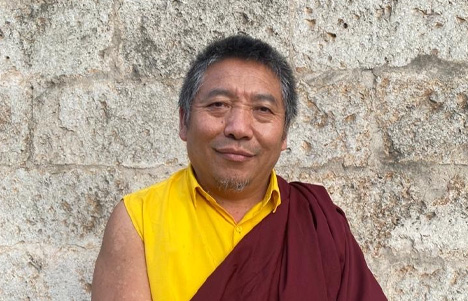
Lama Pasang Gurung was born in 1968 in the village of Sal Dang in Dolpa, Nepal. At the age of 16 he entered Namdroling Monastery in Mysore, India and spent the next four years learning Buddhist practice, grammar, writing, and dharma history before entering shedra in 1990.
After completing the shedra in 2000, Lama Pasang was asked to become the umdze, or chant master, for His Holiness Penor Rinpoche. From 2000 until the passing of His Holiness in 2009, Lama Pasang traveled with His Holiness to Palyul centers in the United States and throughout the world.
In 2003, he started leading the yearly Palyul Retreat in upstate New York, where he continues to instruct first year students in the Ngöndro or preliminary practices.
In addition to the many blessings, lung, and wang he received from his root teacher His Holiness Penor Rinpoche; Lama Pasang received the Mipham Rinpoche Ka Bum lung and wang from His Holiness Dilgo Khyentse in 1989, and the Northern Treasure lung and wang from Taklung Tsetrul Rinpoche in 1990. He is currently one of the two resident Lamas of the Palyul Dharma Center in Queens, NY.
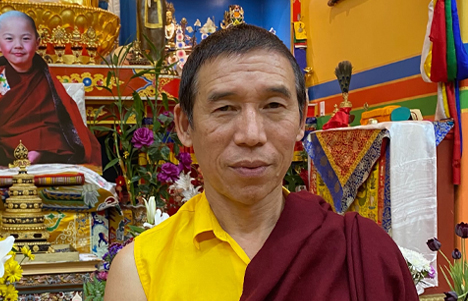
Lama Ugen Rongdrol Palden was born in India, but was sent to Tibet at a very young age to learn the sacred cham dance. He was chosen by H.H. Penor Rinpoche and Tulku Thupsang Rinpoche to learn the Palyul cham from the most senior cham masters in Palyul mother monastery in Tibet in the early 1980s, thus becoming the Palyul cham lineage holder. He is often called “Cham-pon” cham master by his students. In 2015 Lama Ugen led sold out Cham Dance adult classes at the Rubin Museum during the exhibition Becoming Another: The Power of Masks. He was also part of Om chanting and solo Bardho Thodrol recording during The World Is Sound exhibition in 2017.
In addition to the many blessings, lung, and wang he received from his root teacher His Holiness Penor Rinpoche; Lama Ugen received the Mipham Rinpoche Ka Bum lung and wang from His Holiness Dilgo Khyentse and great Dzogchen teachings and transmissions from many great masters including Khenchen Namdrol Rinpoche. He is currently one of the two resident Lamas of the Palyul Dharma Center in Queens, NY.
Major support for Himalayan Heritage is provided by The Frederick P. Lenz Foundation for American Buddhism.
Death Is Not the End is supported by the E. Rhodes and Leona B. Carpenter Foundation, Ellen Bayard Weedon Foundation, Robert Lehman Foundation, and The Prospect Hill Foundation.
The Rubin Museum’s programs are made possible by the New York State Council on the Arts with the support of the Office of Governor Kathy Hochul and the New York State Legislature.
Death Is Not the End is supported in part by the National Endowment for the Arts.
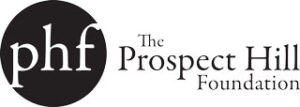
![]()
